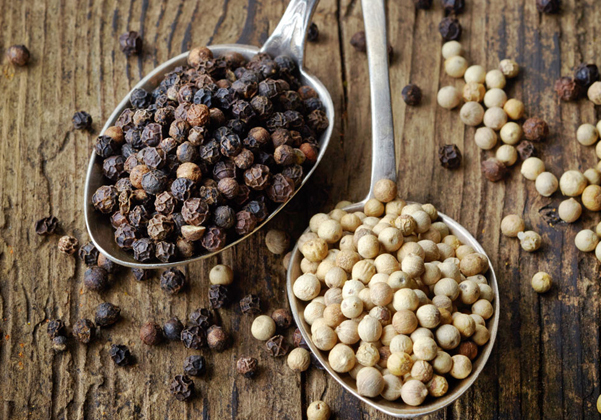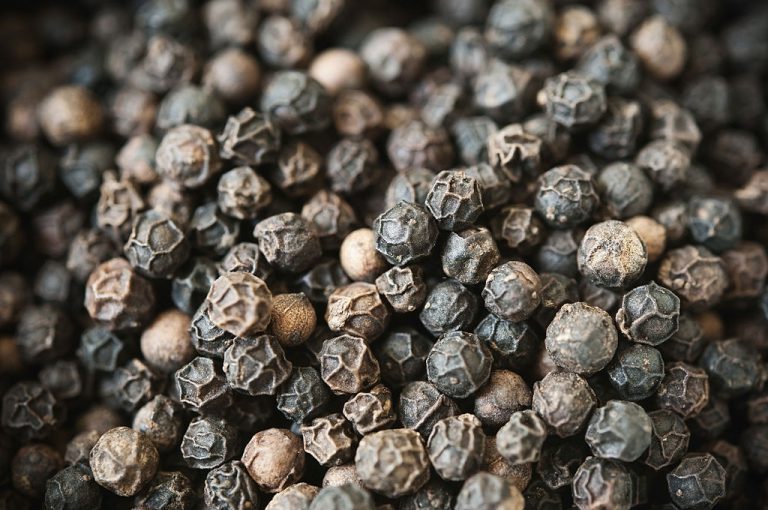There is no doubt that Vietnam Pepper has become an indispensable spice for cuisines in its homeland as well as in many other countries all over the world, not to mention its function as the best medicine to the immune system. With great benefits pepper brings to humans, the demand for this spice globally increases by the day. In fact, Vietnam has long become the leading giant in pepper exports in the global market. This means that if you are finding a pepper source for business, Vietnam is definitely your best choice. To facilitate your pepper sourcing process, this blog article will provide you with useful information about the Vietnam pepper market.
Take a look at our main points in this article:
1. Vietnam pepper market – A plentiful supply of pepper with competitive price
As has mentioned before, Vietnam is currently the largest exporter of pepper in the world. According to statistics provided by the Food and Agriculture Organization of the United Nations, Vietnam has placed the first position with more than 100,000 tonnes of exported peppers in the Top 10 of Pepper Producers Worldwide (Average 1994 – 2018). Not only does Vietnamese pepper possess the high quality, it also has a very competitive price compared to other exporters.
In Vietnam, there are 3 main types offered, including Green Peppercorn, Black Peppercorn and White Peppercorn. These three types of pepper are all from Piper Nigrum plant. Black peppercorn is picked and dried in the sun after fully maturing on the vine. In contrast, Green Peppercorn is harvested while it’s still young, then preserved or dried, making its flavor milder than the black one. Lastly, the White Peppercorn is the inner seed of Black Peppercorn. The farmers will soak them and remove the black outside skin, resulting in a different flavor when tasting white peppercorns.
Pepper trees grow mainly in 6 provinces of Vietnam, encompassing Binh Phuoc, Dak Nong, Dak Lak, Ba Ria – Vung Tau, Dong Nai and Gia Lai. According to VITIC (Vietnam Industry and Trade Information Center), Vietnamese pepper has been present in 26 countries and territories, of which the U.S was the largest export destination. It is followed by India, Pakistan, UAE, Germany, Egypt, etc.
2. How are Vietnamese peppers processed?
For green peppercorns, farmers will pick them whilst young and process these berries with brine consisting of pure water, salt and preservatives. Green peppers then can be used in cooking.
For black peppercorns, the farmers will pick them when one or two clusters of fruit on a low-hanging stem begin to turn red. The picked berries will be dried in the sun over a period of about a week and a half. In this period, the fresh berries will turn into the black peppercorns. In fact, before
For white peppercorns, the mature pepper berries which have fully matured to red will be soaked in water for about 10 days. Then the workers will trample the berries to remove husks, this practice also removes the hot piperine compound, volatile oil and other compounds that produce black pepper aroma. This results in the different flavours and heat components of black and white peppercorns.
3. The required certificates and standards for pepper quality
In order to successfully export pepper to other countries all over the world, it is required that Vietnamese peppercorns have to meet very strict standards. For this reason, Vietnam government always makes more effort to support pepper growing provinces.
In fact, the government encourages farmers to conduct sustainable intensification, reduction in pesticide usage, I.P.M (Integrated Pests Management) Application, etc. in order to achieve certificates, such as VietGAP (Vietnamese Goods Agriculture Practices) for Vietnam market, GlobalGAP (Global Goods Agriculture Practices) for export, and RA (Rainforest Alliance). For Muslim-majority countries, Vietnamese peppers have to be certified with HALAL to ensure that the agricultural products meet the requirements of Islamic law.
Regarding standards for peppercorns, they should qualify the standards of the International Pepper Community (IPC), which have different standards for each type of peppers (Black, White and Dehydrated Green Coffee). Besides, in order to export peppers to the U.S market, Vietnamese peppers have to meet ASTA (American Spice Trade Association) Standards which ensure the clean and safe spices.
Top 10 of Pepper Producers Worldwide (Average 1994 – 2018). Source: FAOSTAT
4. Vietnam pepper classifications
Vietnamese peppers are classified into a number of grades according to the ASTA Standard. Have a look at the pepper grades below:
Black Pepper 500G/L
Density: 500G/L
Moisture: 13% Max
Admixture: 0.5% Max
Black Pepper 550G/L
Density: 550G/L
Moisture: 12.5% Max
Admixture: 0.2%
Black Pepper 570G/L
Density: 570G/L
Moisture: 12.5% Max
Admixture: 0.2% Max
Black Pepper 580G/L
Density: 580G/L
Moisture: 12.5% Max
Admixture: 0.2% Max
Black Pepper 580G/L (5MM)
Density: 580G/L
Moisture: 12.5% Max
Admixture: 0.2% Max
White Pepper 630G/L
Density: 630G/L
Moisture: 13.5% Max
Admixture: 0.2% Max
Viego Global – Your trusted sourcing partner in Vietnam
Given that Vietnam has plenty of Pepper Suppliers in Vietnam, it is not easy to find a trustworthy supplier to work with, however. Let’s answer the questions below before conducting your sourcing:
- Are you going to source peppers from Vietnam?
- Are you finding a Vietnamese trusted supplier for pepper?
- Are you finding Vietnamese pepper source of supply with high quality and competitive price?
If your answer is yes for all, please comment below so Viego Global can help you out easily. Being present at the factory location and the economic centre of Vietnam, Viego Global can greatly help you professionally source, manufacture, and execute order, providing maximum benefits to our clients in terms of delivering a wide range of products at the best competitive pricing. Please contact us HERE for further support!



